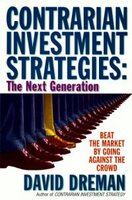A few days ago a friend asked me about my opinion about Intel (Nasdaq: INTC). I have been an Intel shareholder for many years and I have continued to add to my position even as the shares have continued their rather dramatic decline recently. At current levels, Intel is not your pure value play, but it's getting there. I believe the shares provide a reasonable Margin of Safety and would expect any further declines to be relatively moderate from these levels. The company is buying its shares back aggressively and I expect will continue to increase dividends. Here is an excerpt of the email I sent back in reply earlier today.
“Intel is definitely a disliked stock right now, which is why it’s on my radar screen. The company has had some missteps lately. AMD (NYSE: AMD) is hot on its tails and has been taking share especially in server market. And there are rumors DELL (Nasdaq: DELL) might soon start using AMD chips and stop being exclusive to Intel. All these are negative overhangs on the stock. Plus you have the likes of Texas Instruments (NYSE: TXN) and Marvel (Nasdaq: MRVL)) which seem to have products which are better targeted at today’s most popular consumer electronic gadgets. But Intel is not sitting still either. They continue to spend on R&D and have managed to stay ahead of AMD in cranking out chips more efficiently, leveraging the company’s economies of scale. AMD has made up some ground though. Intel is also diversifying into other areas as evident by their recent partnership with Micron. Not to mention the fact that Microsoft’s Vista will be rolling out next year (hopefully!) and it should bring with it a whole new round of upgrades. Finally, there are the emerging markets, where Intel and AMD are trying to gain a foothold, and which will eventually present the companies with growth opportunities. Worst case scenario, by the way, is that Intel will use a price war to crush AMD. A strategy it has used in the past.
Intel remains the powerhouse of the industry. The company has solid Return on Equity and profit margins (although some think the margins have peaked for the company). The stock pays a 2% dividend at these levels. Not bad and I think they will continue to raise the dividend. On a forward P/E basis, the stock is trading at around 18.5 times 2006 projections and about 15.2 2007 projections. That is compared to the S&P 500 which is trading at 16.1 times 2006 estimates and 15.5 times 2007 estimates. So the question is, does Intel deserve a premium multiple to the market. My position is that the answer is yes. So you could buy the stock just on this basis if you are a long-term investor.
Here is another way to look at things.
Is the stock a value play? In my opinion, it’s not a true value play but if you believe Intel can continue to grow and earn above its cost of capital for every additional dollar of investment, then there might be a reasonable margin of safety provided by that growth assumption. Based on my calculations, Intel is currently trading at about 1.8 times adjusted book value. Not the cheapest it has been historically. Also, I have calculated the company’s Earnings Power Value to be about $80 billion dollars. EPV assumes no growth. Intel would be a beautiful value play if the market cap was closer to this number, because then you would be getting the growth for free. That was the case for Intel in the early ‘90s, for example.
So on this basis, we would not buy Intel today as a pure value play. But we should consider the possibility that growth may provide us with a Margin of Safety above and beyond the EPV we have calculated. I have made the following assumptions (which you could challenge of course), but I think they are reasonable:
Return on Equity: 23%
WACC: 12%
Growth rate: 8%
With those assumptions, I get a Present Value/EPV ratio of about 2. This means Intel’s PV = 2 * EPV = $160 billion or about $26.3 providing us with a margin of safety of 36% over the current price of $19.3.
The closer the market cap gets to my EPV figure, the more comfortable I will be. But for the market cap to be equal to EPV, the stock would have to drop to $14. Possible? Sure. I think it is unlikely, unless the entire market crashes of course (but that is just systematic risk we can’t do anything about). Could the stock hit $17 or $18 in the near term? Sure. But that is why I think you can take a half position now and the rest after the earnings announcement.
One more thing to think about. This company is a cash machine with a squeaky clean balance sheet. They can take on more debt if they want to and they might end up paying a special dividend a la Microsoft (Nasdaq: MSFT) if they can’t figure out what to do with that cash. The stock traded at these levels back in 1996!”


